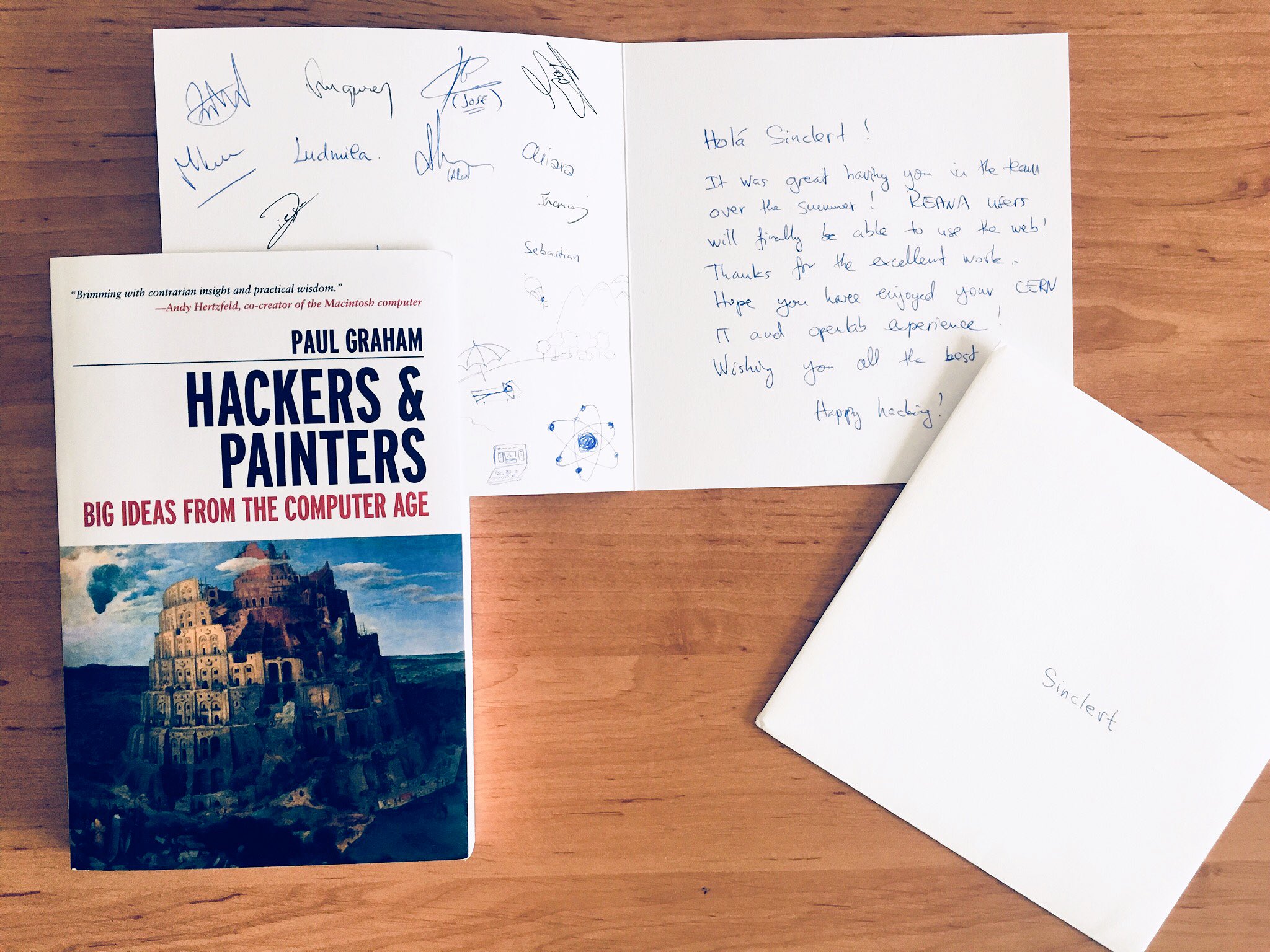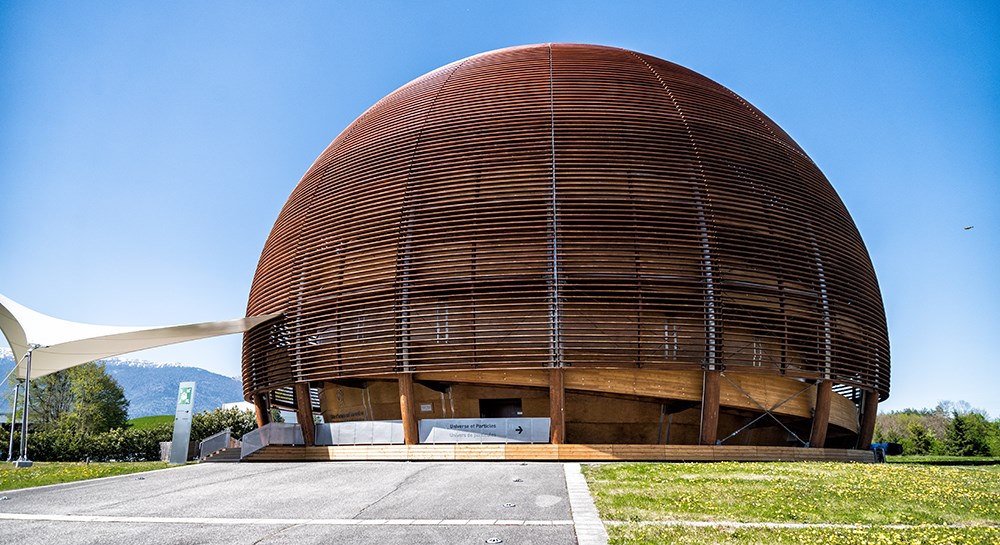
Summer 2018: An Openlab experience
- 22 minsIndex
- Introduction
- What is CERN
- What is Openlab
- My Openlab experience
- How is Switzerland
- Summer trips
- Curiosities
- Final thoughts
- References
Intro
Around these dates, 2 years ago, I was flying to Geneva to join CERN Openlab program. At that time I did not quite know how my summer was going to be, and what I was throwing myself into. All I knew was that I felt excited, and ready to spend a great summer in Switzerland.
Looking back I must say it was an incredible experience.
This post is a summary of everything I experienced during July and August 2018, while being an intern on CERN Openlab program, at Switzerland. Everything from the country, to the way of living, CERN itself, the Openlab program, and the trips I made.
What is CERN?
CERN is the European Center for Nuclear Research, and its name is the acronym of its french name. It holds a place among the most prestige research institutions on Earth, being top one when it comes to anything Physics related, as it has the largest particle collider in the world, the LHC, for detecting new fundamental particles ⚛️.
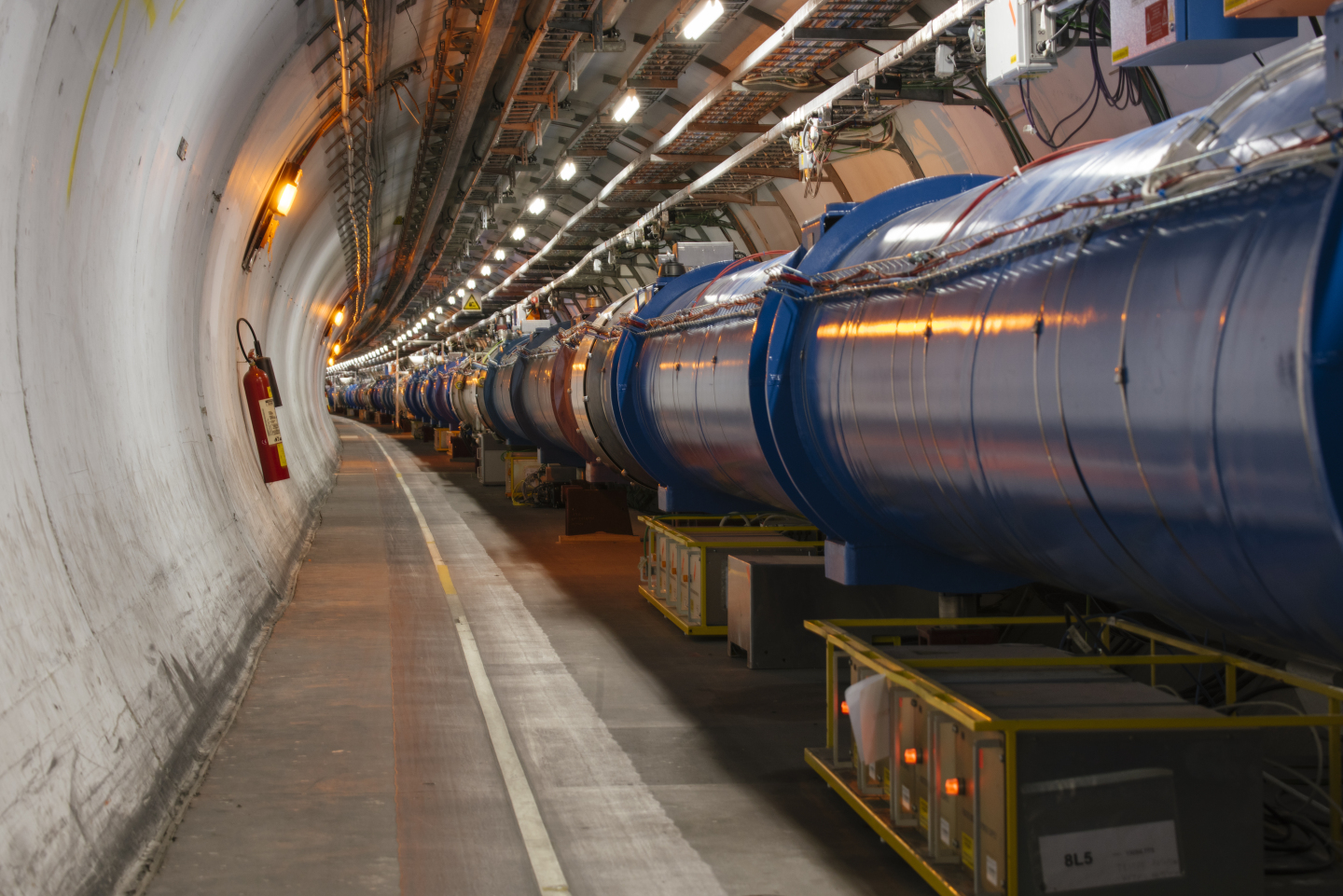
LHC stands for “Large Hadron Collider”, a 27 kilometer tunnel between the borders of France and Switzerland, used to collide near-speed-of-light particles at one of the four detectors: ATLAS, CMS, ALICE or LHCb.
The LHC is a piece of engineering all human kind should feel proud of.
CERN is also famous for being the birth place of the World Wide Web, thanks to Tim Berners-Lee in 1989; and the first touch display prototypes, as explained in one of the site tours.
What is the Openlab Program?
Introduction
The Openlab program is a summer program launched by CERN happening every summer, between July 1st and August 31st. It is an internship program where Computer Science graduate students participate in research projects while attending a series of in-site lectures about CERN, and enjoying some alternative program activities.
The program offers students a very nice experience on cutting edge research and projects from the inside, where they contribute to their assigned projects, and prepare a summary report and presentation when reaching the end of the program. Students do not choose the project they are assigned to, as Project Leaders are the ones taking interest and selecting particular students once they pass an initial filter.
The Openlab program is often confused with the “Summer Student program“, as they are very similar: both of them happen every summer, and both of them offer internship positions to students. The main difference is that Openlab is centered on Computer Science students, offering only 40 spots, while the Summer Student program offer between 150 and 200 spots, to students of all backgrounds.
The option to participate is open to people from around the world, and the application numbers are astonishing. In the 2018 edition, around 1,600 students applied, but only 40 of us were selected (1).
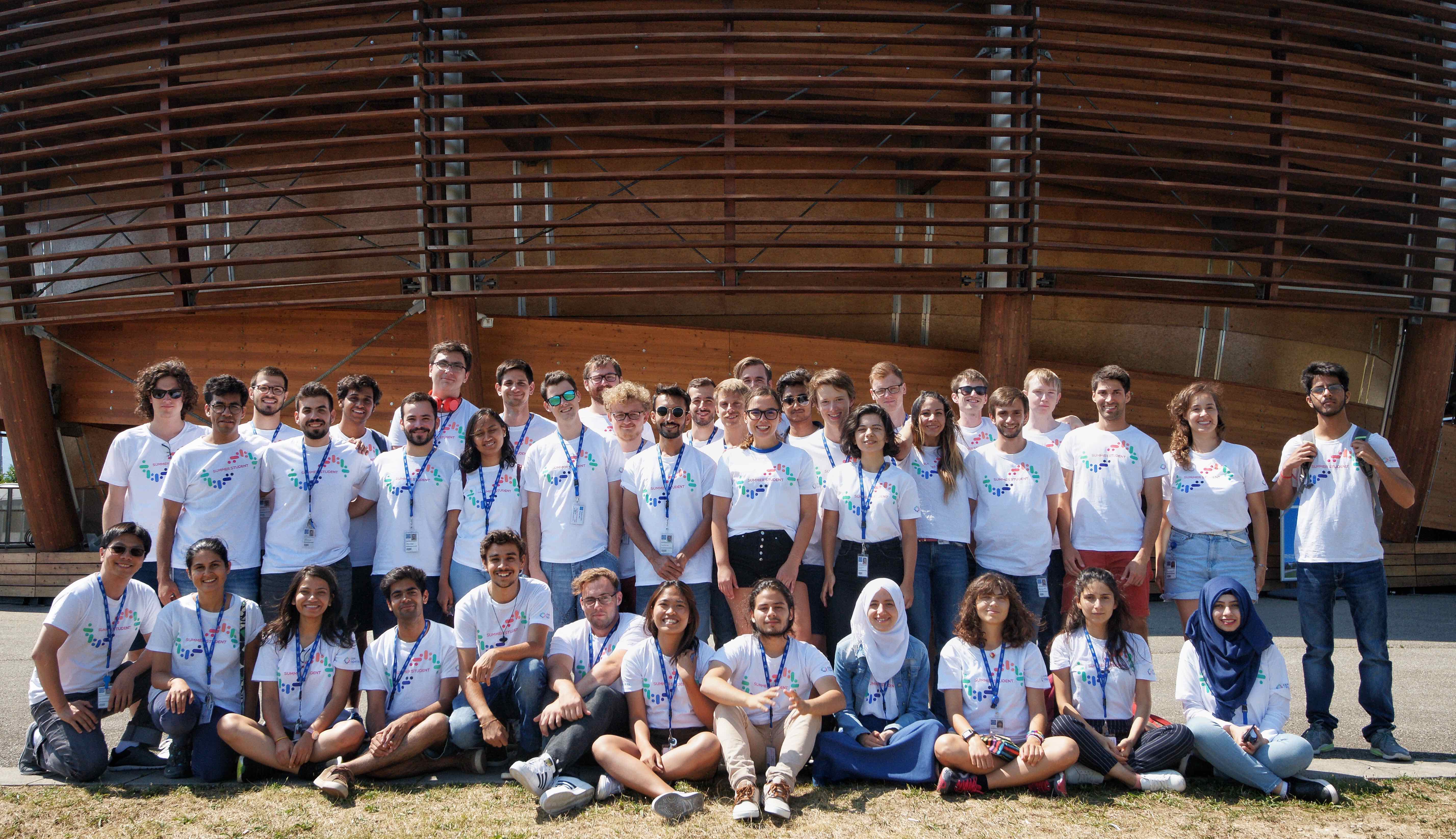
Program logistics
Openlab students arrive at the beginning of July to start their internship program. Before the start of the program, Openlab offers student the possibility to live in Saint Genis, a french village just across the border north-west of CERN, or to search for their own residence. I recommend accepting Saint Genis, as you will be living with most of the other Openlab participants, and it is quite near CERN.
In addition, CERN has a bike renting program offering students and researchers a free rental bike (only deposit). This is great to move around CERN campus, which has a large extension, and to commute from Saint Genis to CERN faster 🚲.
Just a couple of advises here:
-
Be sure to ask for a bike the moment you arrive, otherwise, you would need to wait until other bikes get available. Bikes do not last more than a few days once the Openlab and Summer programs start.
-
Be sure to have a bike lock, and, as humanly possible, always leave the bike inside CERN.
To connect with the closest city, Geneva, and its main station, Cornavin, there is a tram connecting CERN and Geneva, taking around 35 minutes.
Program activities
The program offer three types of activities: lectures, tours and trips.
Lectures are spread along July and explain the basics of CERN, its experiments, its infrastructure and the projects that are being carried out at that moment. These lectures are some-how interesting as you discover some shocking facts about CERN.
For example, did you know that, because of the collisions, there are 6 petabytes of information being generated per second? (2) Or that there is a bigger collider being planned for 2040? (3)
In addition, the Openlab Program organizes some CERN site tours. On the 2018 edition, those tours took us to the visitors center, the Antimatter Factory and to CERN Prévessin campus, where the Control Center is located.
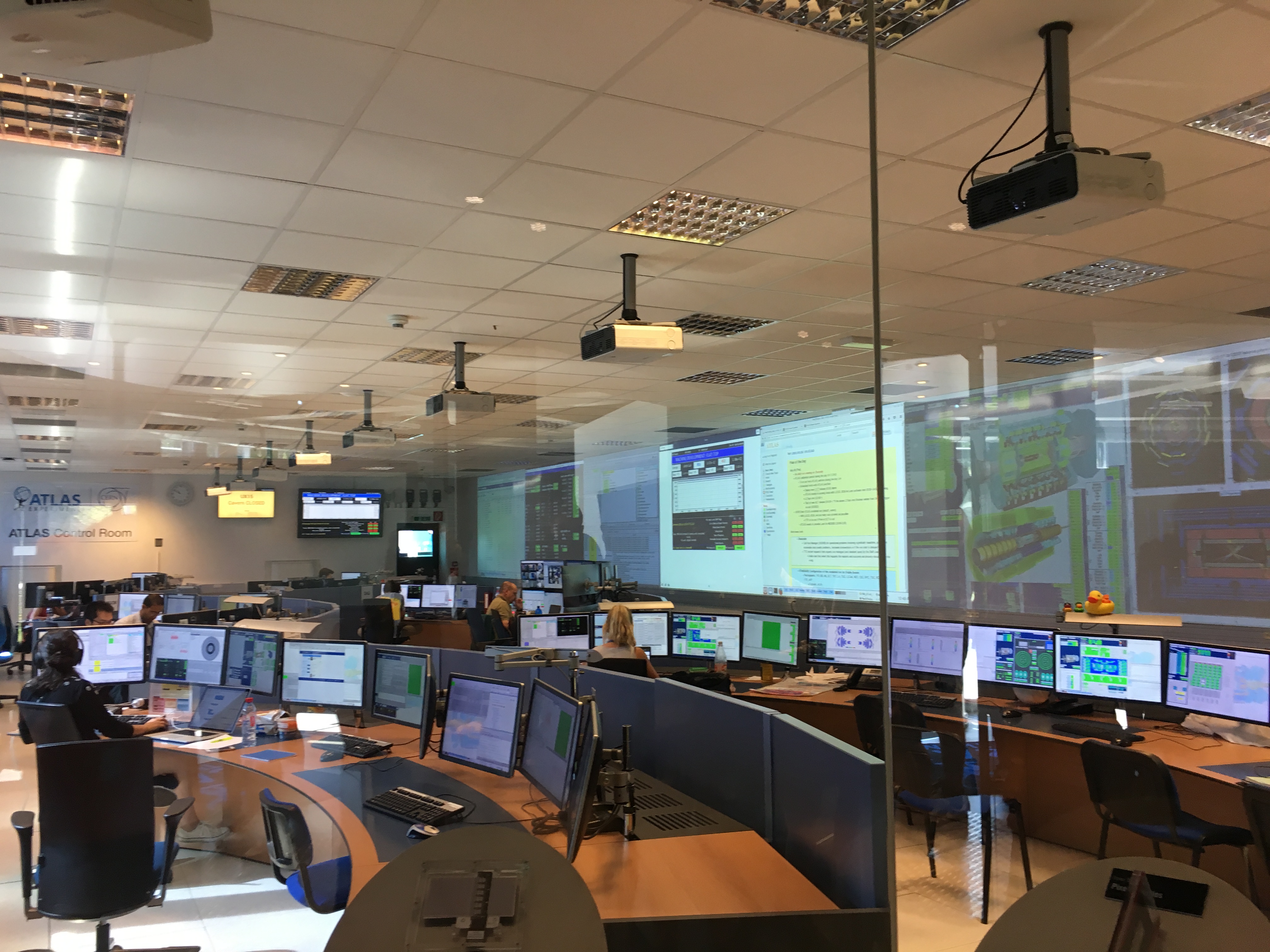
Finally, there are the trips.
The first one is an afternoon trip to Geneva, where there were a couple of activities to get familiarized with the city, its lake, its old town district, and most of its cultural places.
The second trip is a weekend trip to Zürich. This trip is more interesting than the first one, as it includes some company offices tours (Open-Systems and IBM Thinklab), as long as a visit to ETH Zürich, one of the most prestigious universities in Europe. There is additional free time to explore the city, so it is a good overall experience.
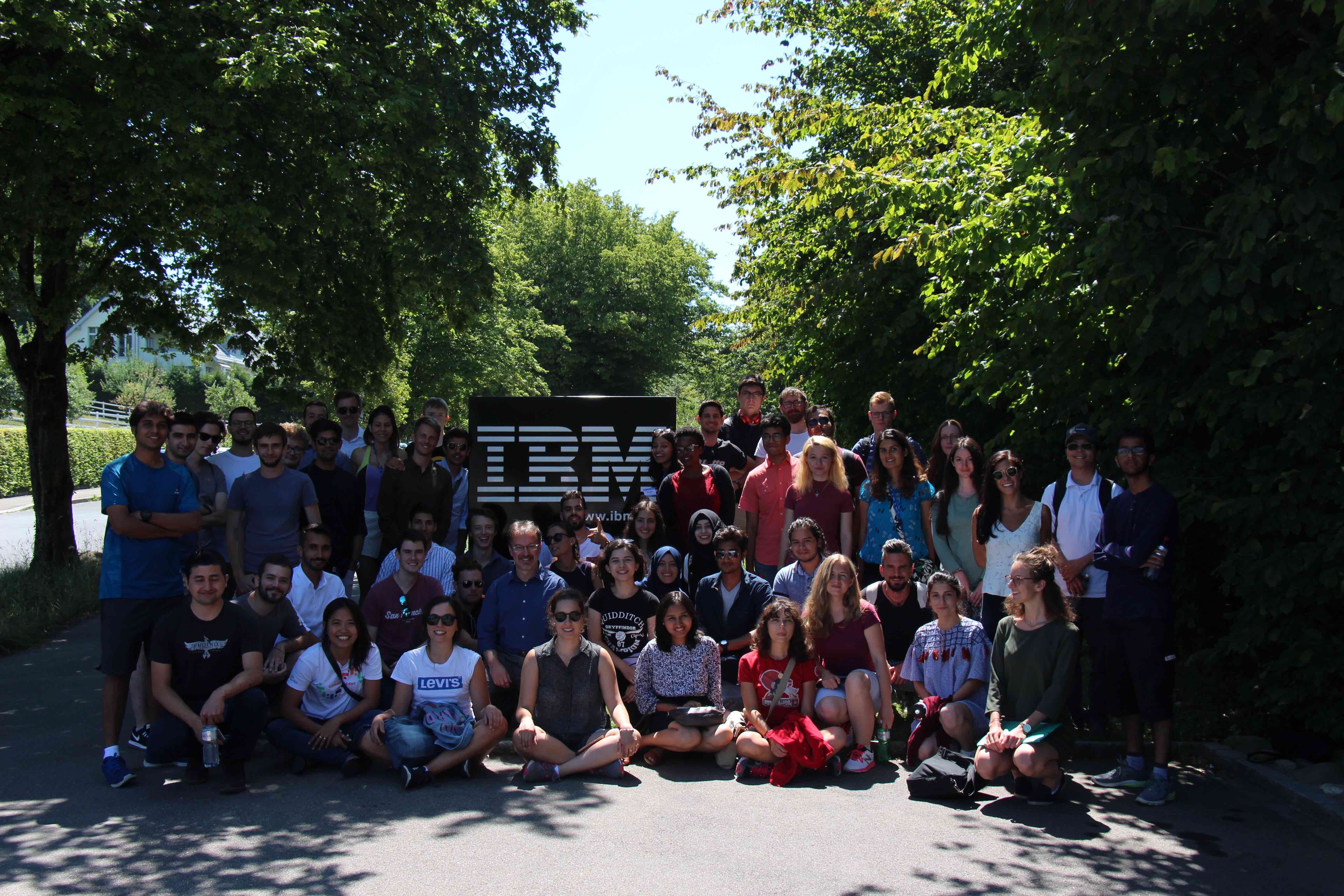
My Openlab experience
As previously explained, Openlab interns are assigned to a wide variety of Software projects. The overall experience that interns go through highly depends on their project and their responsibilities. I had colleagues who were completely bored with what they were working on, and some others who were lucky enough to end up in a well-designed, well-suited project (as it was my case).
In general, interns have limited permissions, and their work progression is closely followed by their project manager.
That being said, I remember a small incident where another Openlab student reconfigured one of CERN main internal network switches, making part of the CERN campus to lose internet connection for some hours. Be responsible, and never forget where you are.
My Openlab project
In my particular case, I joined a project called REANA, under the IT-CDA-DR section. REANA stands for “Reproducible Analysis”, and it is an open source project intertwine with CERN Analysis Preservation initiative.
The main goal of REANA is to create a platform where researchers could define and preserve analysis on big volumes of data, making them reproducible. This has been a long problem in research, where trying to replicate the data analysis other scientists performed is tedious. Making science reproducible also addresses the case of cherry picking results when there are particular interests or bias.
Internally, REANA is composed by a set of Python microservices that are executed in a coordinated manner. The platform is designed to support different storage technologies, different workflow specification languages (Yadage and Common Workflow Language, CWL), and for now one back-end engine: Kubernetes.
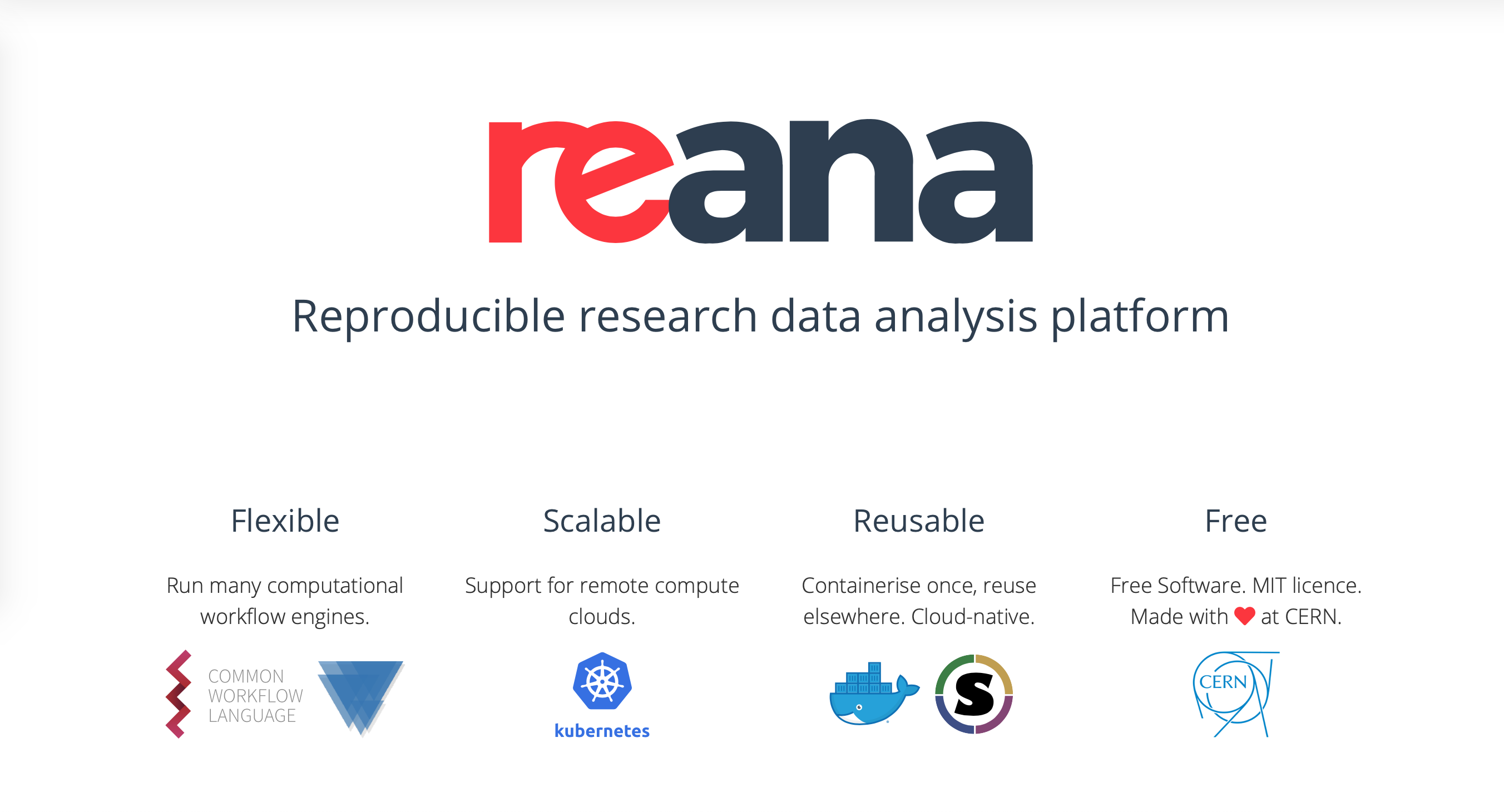
My role within the team was to create the initial version of a new component: the User Interface. REANA did not have a graphical UI at that time, only a terminal one. My job was to design a working prototype from scratch, connecting it to the back-end server so analysis information could be shown on browser interfaces.
It was during my work on REANA when I learned frameworks such as React, Redux, and SemanticUI; in addition to the agile development methodology, good practices for open source software, due to the stand ups that we had every day. On top of that, I deepened my understanding of GIT and Python, and I started to learn Docker and Kubernetes.
I learned a lot, and I had Tibor, Diego and Dinos to thank for that.
If you are curious, REANA is still under active development and is gaining maturity day after day. It is currently near version 0.7.0, being already deployed in different cluster around the world. I know it got deployed at CERN, at the University of Chicago, and very soon at the Brooklyn National Laboratory.
My project report and final presentation can be found on Indico by the name: “REANA, to reproducibility… and beyond!” (available here), title which got reused in 2019 by the next REANA intern.
The Webfest hackathon
CERN organises a hackathon called Webfest every summer, open to both Openlab and Summer student participants. It is hold around the end of July, and lasts a full weekend.
It is a nice experience to get close to your Openlab colleagues, and to meet new people. Indeed, CERN encourages past editions participants that may be around to serve as mentors for the new hackathon edition.
My friends and I decided to create an event platform that could supplement Indico (a CERN developed project), with a clear focus on geolocation and attendance control. We wanted to create a platform where real-time information could be shared between organisers and attendees so that they could better estimate what part of their audience was running late, what part was lost trying to locate the correct space and what part was already on the event location.
We called it “CERN-Connect”.
The official story was that the project was named after the functionality it provided, as it connects event organizers and attendees, but that is only half the story… Around that time, there was a video about a brand new cryptocurrency gaining popularity. On that video, the company representative was making absurd claims about how their cryptocurrency would safe the world…. It was called Bit-Connect.
We ended up winning the hackathon 🏆
We liked memes, and hidden references even more…
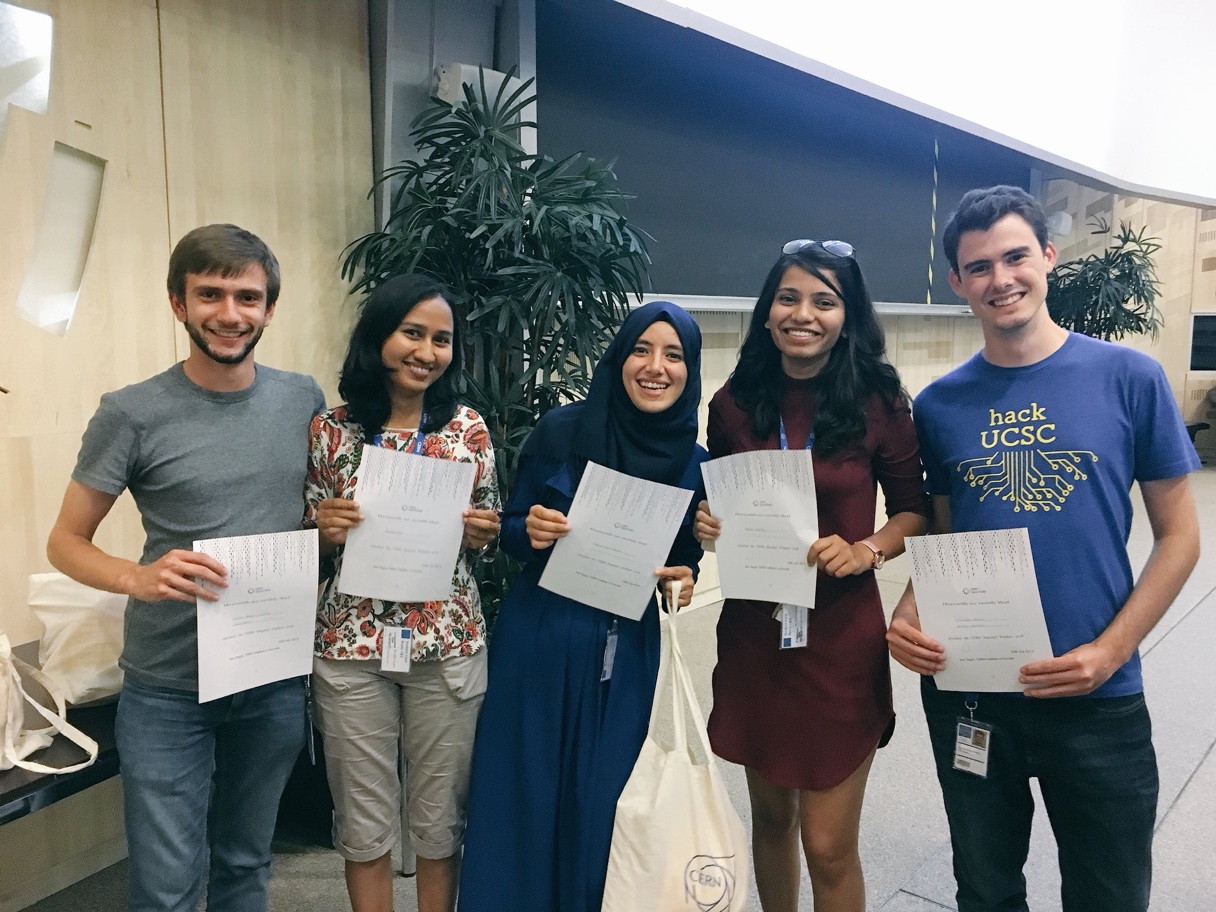
My CERN impressions
Overall, CERN seemed like an amazing place because of the people you can meet there. It is common for employees to have 2 or 3 year contracts, and go back to Industry or research facilities afterwards, so there is always a good mixture of backgrounds.
In terms of facilities, I was surprised of how plain over-ground offices looked. I was expecting some cutting edge infrastructures and breath-taking work spaces, given the budget CERN has. Nothing further from reality. I got the impression that the breath taking places were all placed underground, on restricted areas like the LHC tunnel, which we as Openlab interns were not allow to visit.
However, there were others over-ground facilities that cached my attention: the indoors particle accelerators. Those accelerators are smaller than the underground ones and serve as initial thrusters to help particles reach high speeds before entering the big ones. These indoors accelerators are wrapped in huge concrete blocks (~125 cubic meters) to prevent radiation from leaking.
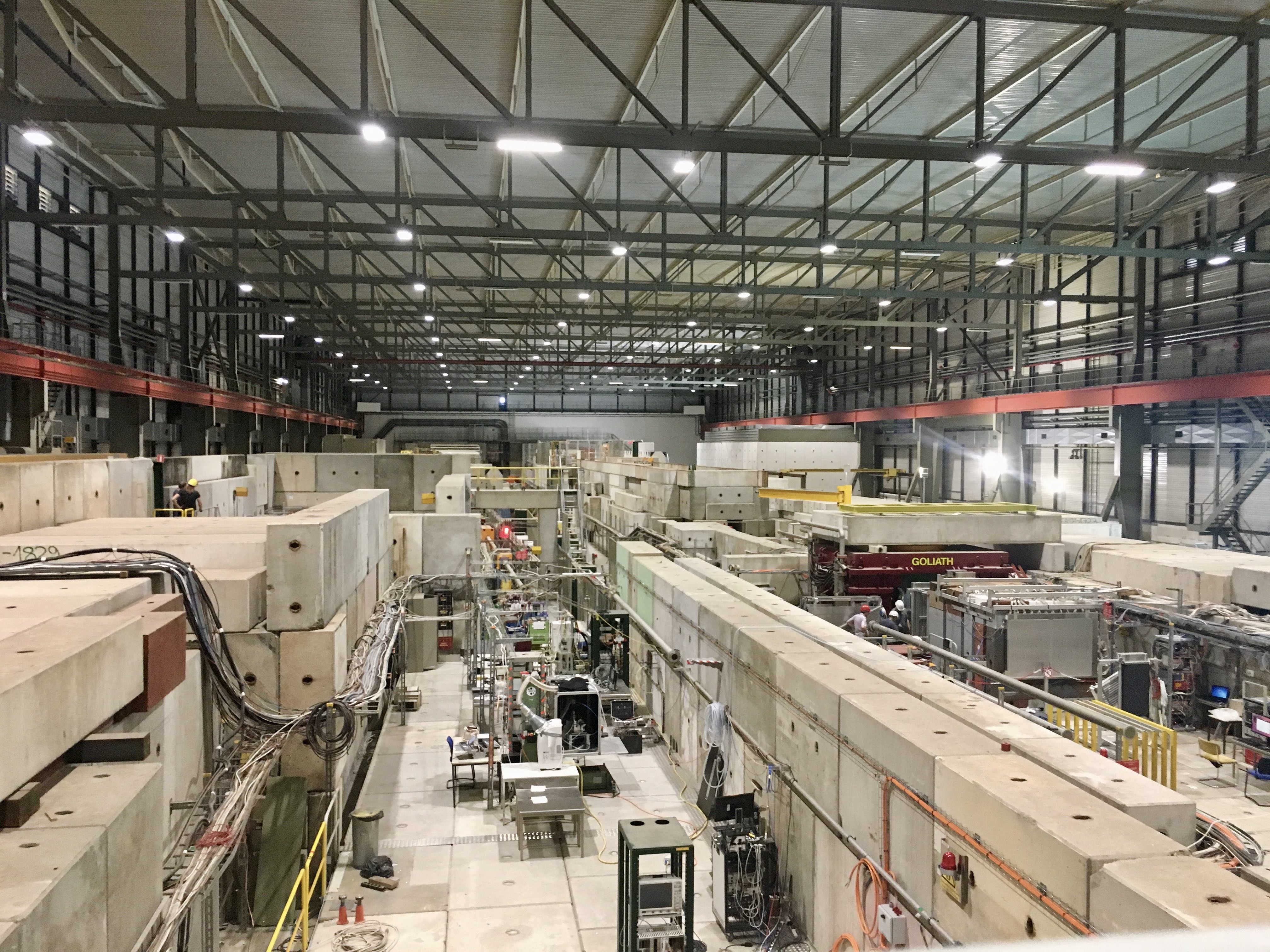
Truly, those indoors facilities were places of pure engineering. The number of servers, cables, concrete blocks, nitrogen pipes, and other electrical and mechanical material was out of the charts. It is, up to date, the most human-made breath-taking place I have ever been. And we didn’t even go under-ground…
How is Switzerland?
One of the most important parts of the Openlab experience is to live far from home, share the experience with your fellow interns, and enjoy one of the most beautiful countries on Earth, Switzerland.
Landscapes
Switzerland landscapes highly depend on the part of the country you are visiting. CERN is located near Geneva, on the South-West part of the country, in what is called the “french area”. For this reason, most of the people speaks French natively. The French area, covering the surroundings of the Léman lake is a peaceful area where rivers and lakes are interspersed with green meadows and forests.
Then there are the Alps.
The Alps are home to the highest mountain of all Europe, the Mont Blanc (technically in France territory), and the biggest glacier of all Europe, near Jungfrau mountain. Both Mont Blanc and Jungfrau will be covered later on this post.
Daily life
On more practical matters, Switzerland uses its own currency, the Swiss Franc (CHF), although accepts Euro in most of their territory. Francs are a bit less valuable than the Euro, but the price of living is quite high. I would say almost double to my home country, Spain.
The climate is usually smooth, although it can reach quite extreme temperatures, both in Winter and Summer, given that the whole country is far from big volumes of water.
Regarding food, cheese and chocolate are the kings of the land. Cheese dishes such as Fondue and Raclette can be found in almost any restaurant, being the most typical and delicious in Swiss gastronomy. Then there is the chocolate: Switzerland is also famous for its sweets and chocolate bars. Indeed, there are plenty of chocolate factories throughout its territory, producing sugar products that are exported all over the world. Lindt, Milka, Nestle, Cailler, Toblerone… all Swiss. 🍫
Summer trips
Outside work, my experience during the summer of 2018 was also defined by the trips and the experiences that we, Openlab colleagues, lived together.
During the two months period we were living in Switzerland, we travelled a lot. I would say that 7 out of 9 weekends we rented a car and drove somewhere far from Geneva. The remaining ones were spent there, as it is a wonderful place to go swimming and kayaking on its lake.
Geneva
Geneva was the closest city to where we lived, and the place where we spent most of our time outside work. The city is placed around one of the corners of Léman Lake, and it has 2 crossing rivers, dividing the city into 3 main sections.
It is the place where United Nations, the World Trade Consortium, the World Health Organization and so many other international organizations place their headquarters. It is also home to famous sculptures like the Broken Chair or the Reformation Wall; and important buildings like Saint Pierre Cathedral, which can be entered and visited to get an incredible view of Geneva and its lake.
Nevertheless, the most iconic places for me were the Jet d’Eau, a water jet reaching 140 meters high; Bains de Paquis, a lake beach with some restaurants and a couple of structures to jump into the lake; and The Junction, the point where Geneva rivers merge, mixing waters and providing some majestic pictures from the bridge next to it. Of course, people can also swim there 😄
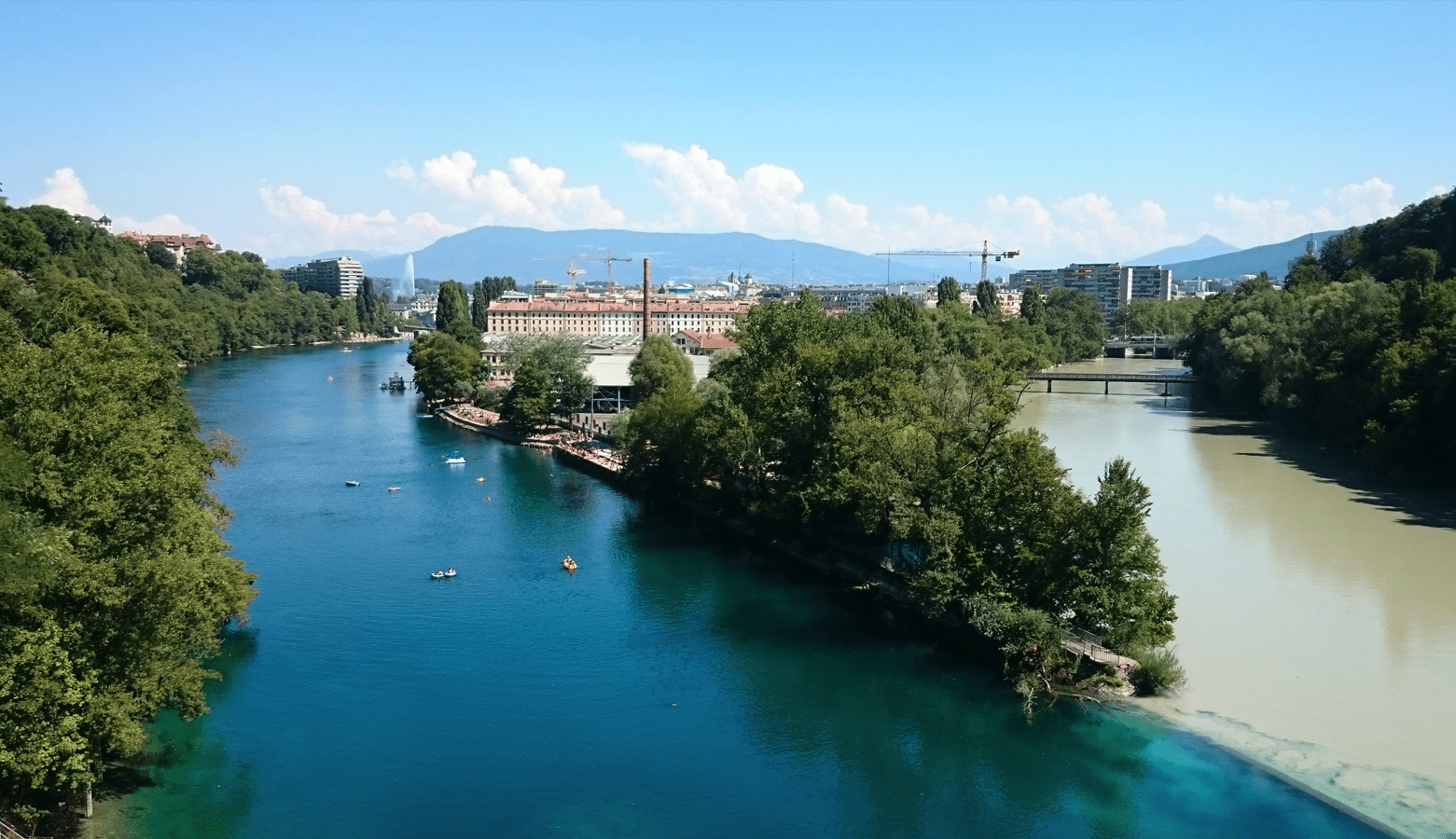
Finally, another point of interest is the Parc de la Grange, where they lit dozens of bonfires on August 1st to celebrate Switzerland National Holiday. If you are visiting Geneva around those dates, do not miss it!
Montreux
Montreux is a small town placed at the other side of Léman lake. It is a relaxing place where people go to do hiking, or visit Château de Chillon, a famous lakeside castle.
I got the impression that Montreux is a bit of a hippie town, because of the vintage LP shops I found along the way, its Pop icons statues (like Freddie Mercury), and the Jazz music festival happening there early July.
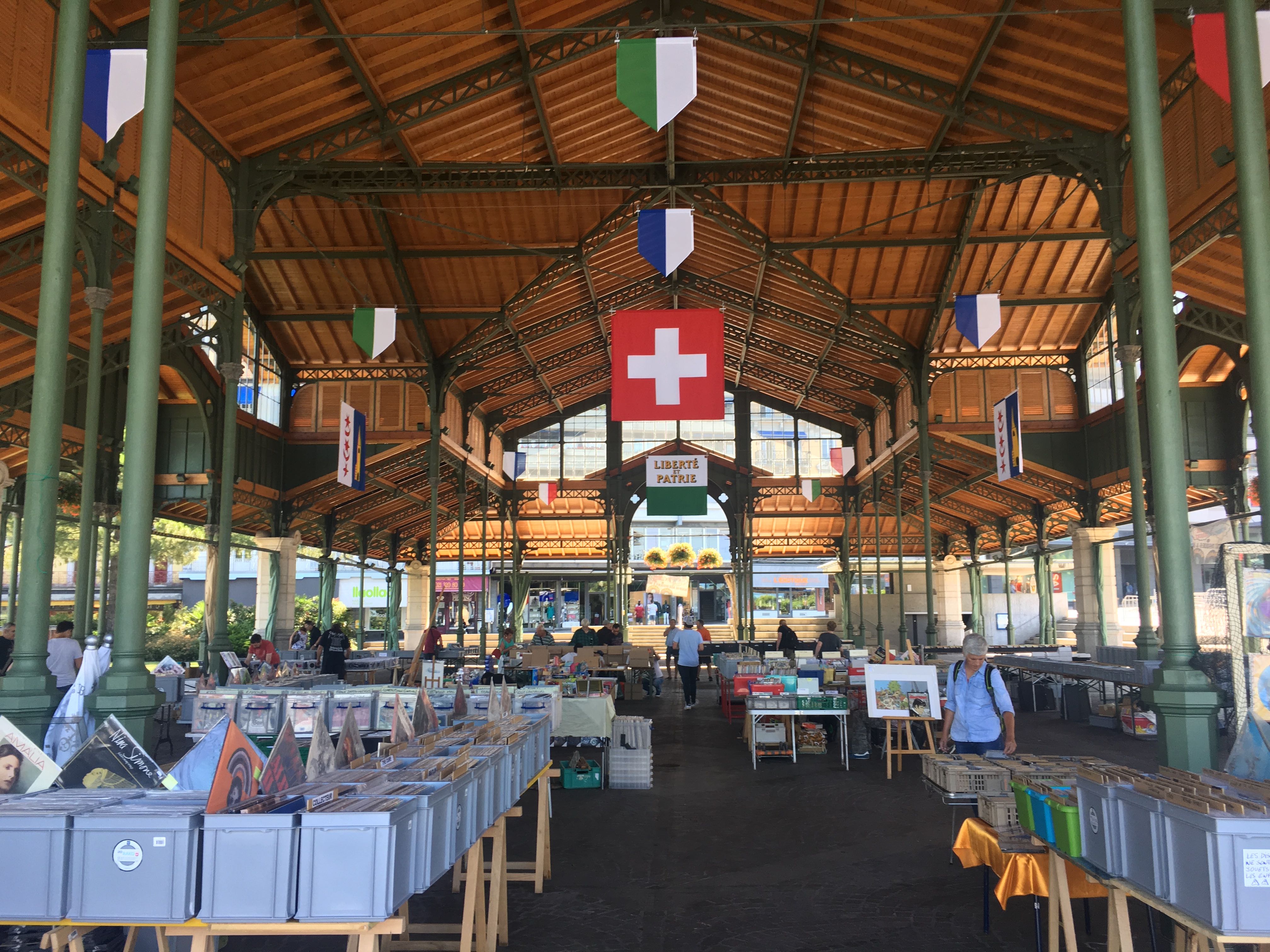
In addition, there are multiple places offering paragliding jumps, something that me and my friends gathered the courage to try. I am glad I did it, paragliding over Léman lake was quite the experience.
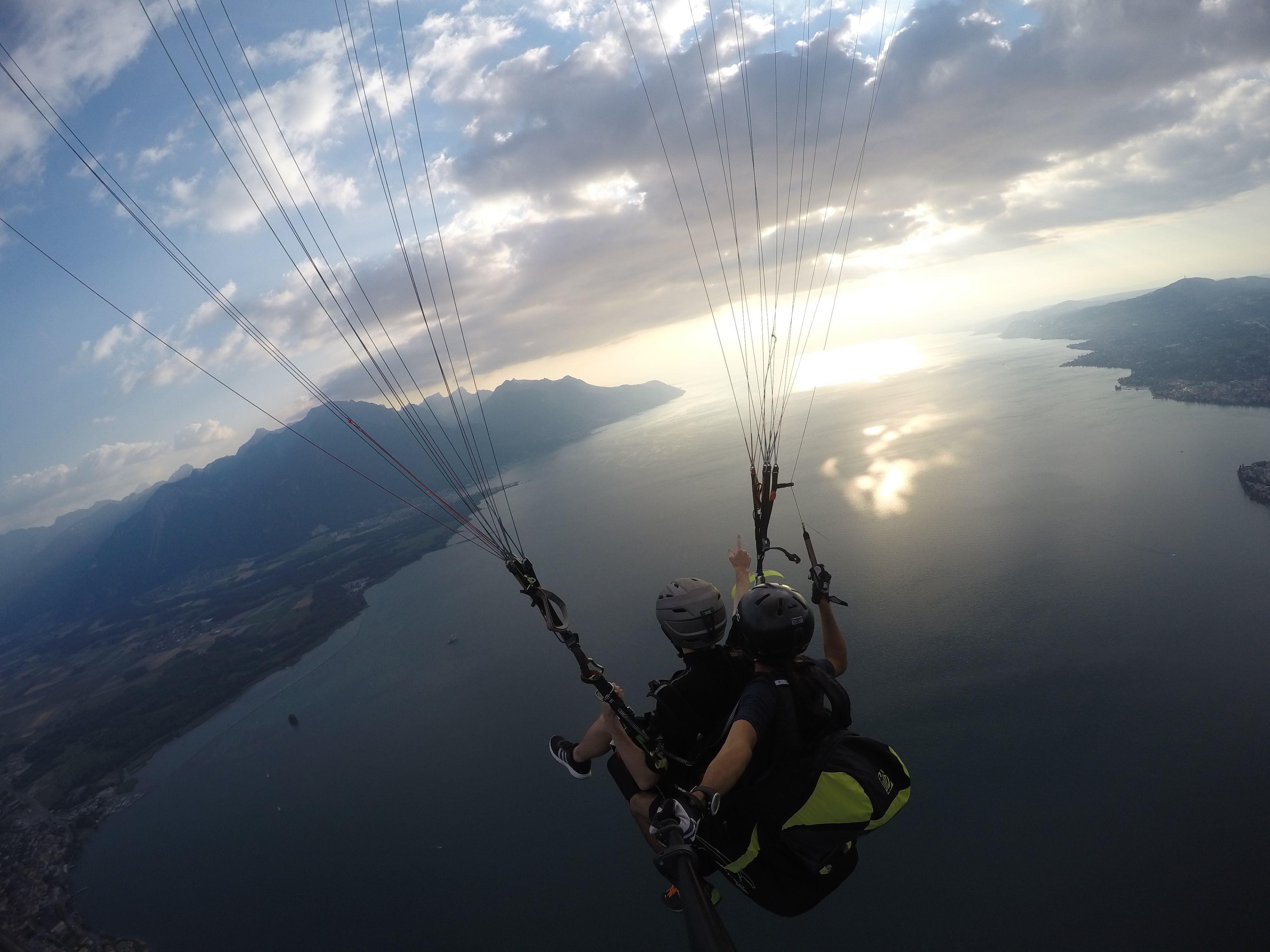
Lyon & the World Cup Final
2018 was a football World Cup year. I followed the games during some weeks, and got mixed feelings when I saw France reaching the final. On one hand, I would rather have Spain there; on the other hand, I knew living a World Cup final inside one of the countries that participate was going to be special ⚽.
With that in mind, some Openlab friends and I got a train to Lyon on July 14th. We visited Lyon as an excuse to live the final from Place Bellecour: a large square at the center of Lyon, where screens were going to be placed the next day, July 15th, for the World Cup Final.
The first day, we visited Lyon old town between the Rhône and Saône rivers, Saint-Jean Baptiste Cathedral, Notre Dame basilica (after taking a cable car to reach it), and the Botanic Garden, within the Parc de la Tête d’Or.
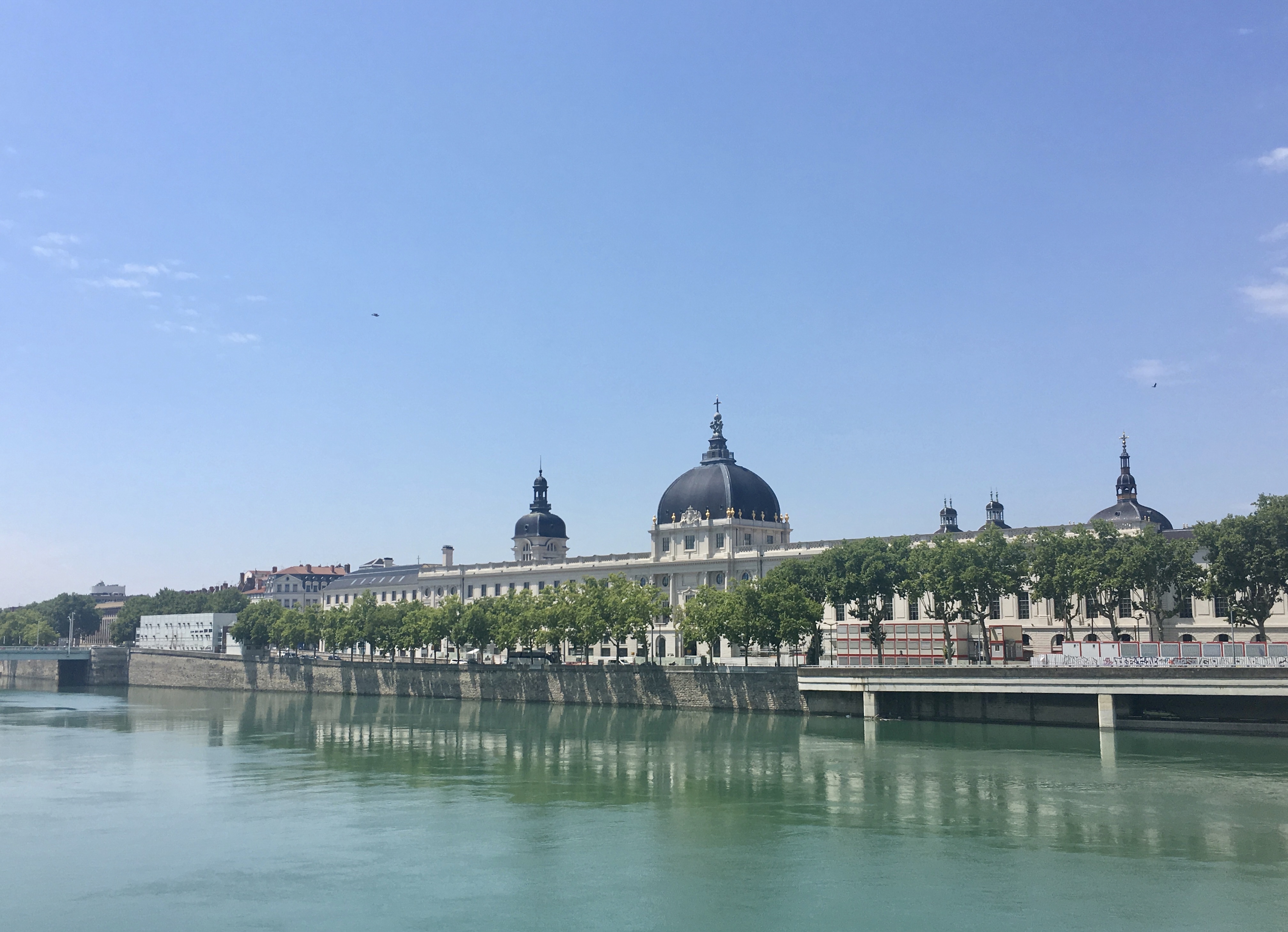
On the day of the event, it was hard to think about anything else: people were starting to warm up for the game, chants of Allez le bleu! were flooding the streets, and public transport was unusable.
Finally, France won, and craziness started…
Chamonix & Aiguille du Midi
Chamonix is a french village at one hour car from Geneva, the closest to Aiguille du Midi: a very high lookout from which, if the day is clear, visitors can see the Mont Blanc, the tallest mountain in Europe.
Taking the cable car to Aiguille du Midi is a unique experience. First, because it is about 110 CHF, and secondly, because it takes you up the slope of some mountains where you will wonder how it was humanly possible to build anything there. At least that is what I was thinking.
Clearly worth the 110 francs.
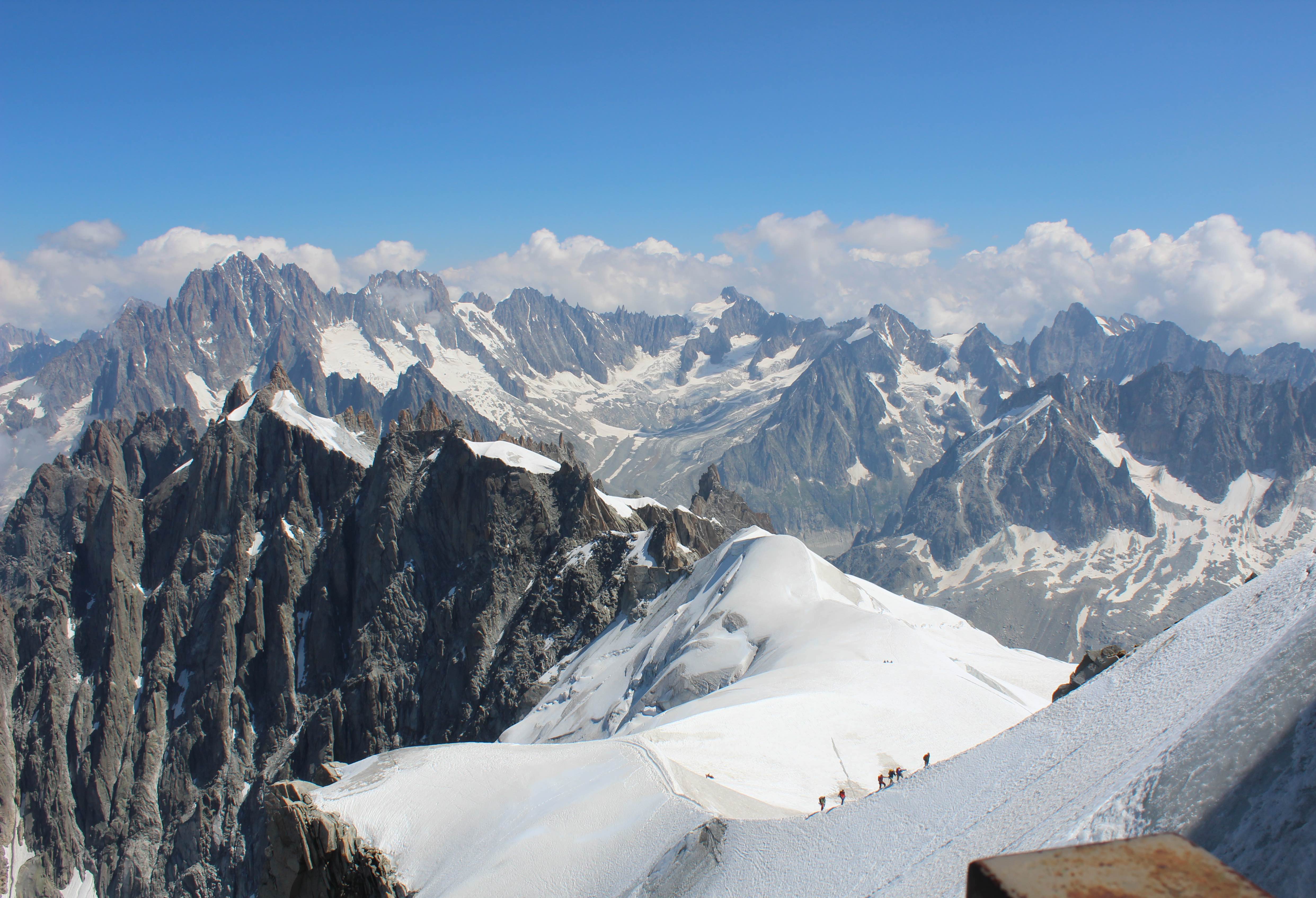
Zürich
At some point around late July and early August, Openlab organised the trip to Zürich. It was a trip where we visited some companies headquarters, attended some ad-hoc ETH Zürich lectures, and walk central Zürich streets following a guided tour.
Zürich is located in what is commonly known as the “German area”, the North-East part of Switzerland. Indeed, most of the street signs and local advertisements were written in german.
Overall, we had very limited time to explore the city as it deserved, but it was enough to get the vibe of it. My impression was that Zürich is a more serious city than Geneva: there is more industry, and authorities are less permissive with people swimming in their lake.
Zermatt
Zermatt is a colourful swiss village traversed by the Matter Vispa river, located at the feet of Matterhorn peak (the mountain on the Toblerone chocolate bars).
It is a very special place, as it is not reachable by car (by a non-electric car, at least). The city is declared as zero emissions area, and can only be traversed by electric cars or walking. In order to reach it, we needed to leave the car on Täsh, the closest city North from it, and take a connecting train to Zermatt.
Interlaken & Jungfrau
Finally, in late August, we rented a car and took a weekend trip to Interlaken. Interlaken is one of the most famous villages around the world, and its name does not lie: it is small village placed between two crystal-clear and cold water lakes. Brienz to the East and Thun to the West.
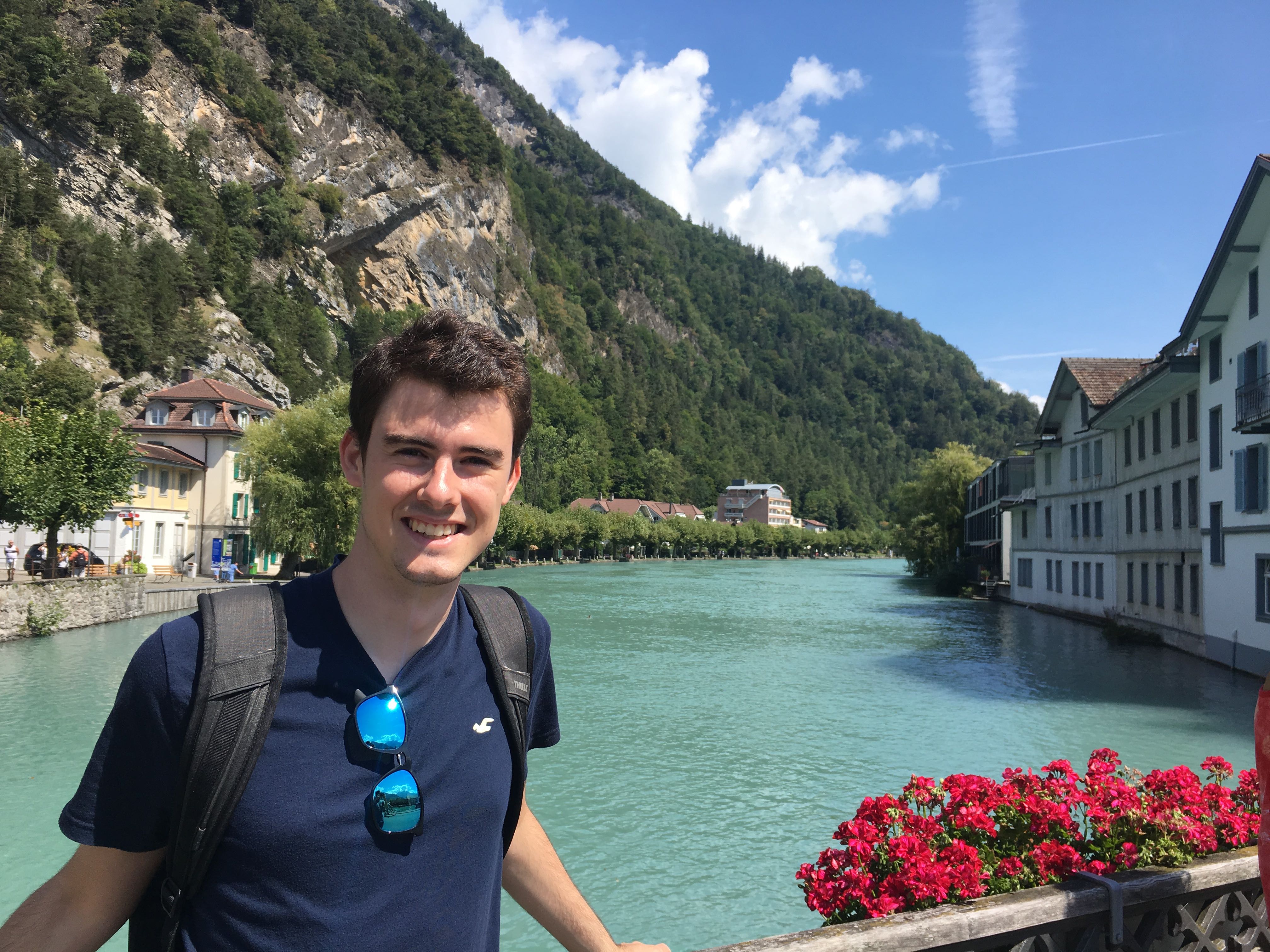
Near Interlaken, up the slope of a mountain, are the Saint Beatus caves. They are old and humid caves where stalactites and stalagmites has been form for thousands of years.
Interlaken on itself does not have that much to offer apart from its outstanding beauty, which you can find looking around in any place of Switzerland. For this reason, we decided to stay the night at Grindelwald, a tiny village near Interlaken, so that we could visit Jungfrau the next morning.
Jungfrau was the main course of the weekend, and we needed to rest properly to enjoy it: We took the Grindelwald LGP cable car, and stayed the night at a cheap hostel up the mountain. We were interns after all…
Next morning we drove to Lauterbrunnen and took a train to Jungfrau (“Top of Europe”). I must say that train ticket prices are around 100 francs, but they get cheaper the earlier you take the train. We were there first thing in the morning. The train climbed slowly while showing us beautiful valleys and mountains along the way. The trip is around one hour long, so relax and enjoy the ride.
Finally, we reached Jungfrau peak, and our excitement was over the sky. There is a huge lookout with many exits directly into snow areas where people can enjoy snow, while having the biggest glacier in Europe as landscape. 🏔️
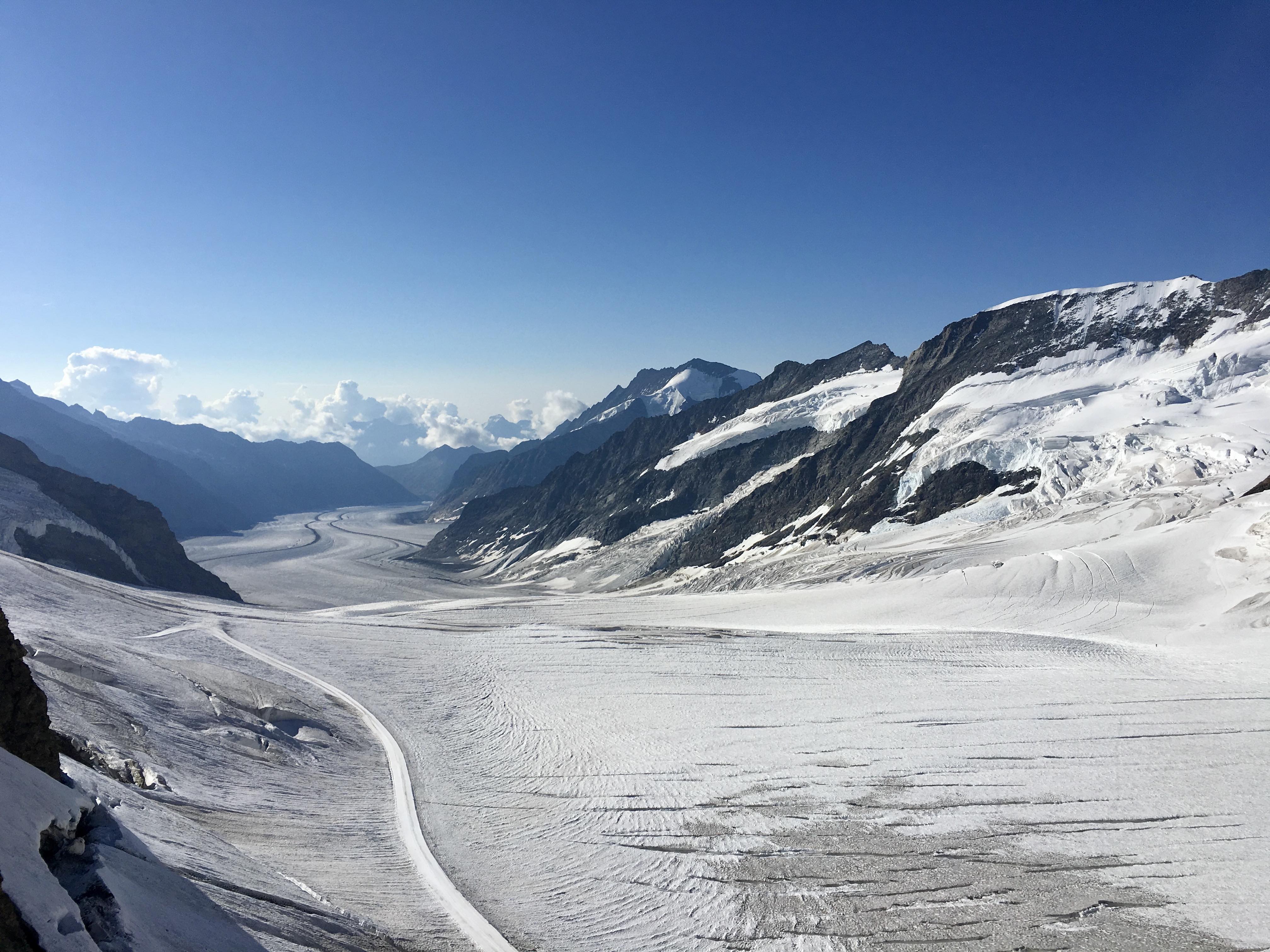
This video makes more justice to the experience.
Curiosities
There are dozens of curious facts about CERN and my Openlab experience that have been set aside through this post. Here is a collection of the most interesting ones.
The summer student temple
One of the most preserved secrets of Openlab and CERN as a whole is the location of the Summer Student Temple. It is supposed to be located within a network of maintenance tunnels below some of CERN buildings.
Some Openlab colleagues and I entered the tunnels a couple of times, but we were unable to find it. The tunnels are endless! If you find yourself as an Openlab or Summer Student any time in the future, ask other people about the temple. You will hear incredible stories, and find relevant information to your own search.
CERN experiments separation
I explained before how CERN LHC infrastructure has 4 critical points where collisions can occur: ATLAS, CMS, ALICE and LHCb. For each of those places, there is an “experiment”. Each experiment has its own rules, and a different type of detector, so they can broaden the search for new elemental particles.
What is surprising, and this is something I learned long after my Openlab experience, is that scientists participating at different experiments are not supposed to discuss ideas together. This policy is supposed to help reduce the bias scientists apply to their simulations and analysis across experiments.
Geneva silent party
At some point during the summer of 2018, Geneva launched a silent party on Rousseau island. The location changes year after year, but I believe they do it every summer.
I had never attended a silent party before, and it was one of the coolest experiences I had. If you was wondering what a silent party is, it is basically a space where attendees are handed bluetooth headphones connected to X different music frequencies. Each frequency makes the headphones light up in a particular color, and play a specific type of music.
That’s the magic: there is almost silence around you, but music plays in your headphones, while being surrounded by hundreds of other people with similar headphones, listening to the same music you are, and dancing to their best. 🎧
Summer competitions
Throughout the summer, there were a couple of Openlab-promoted competitions taking place: the Webfest hackathon, at the end of July; and the end-of-project presentations, at the end of August.
Regarding the Webfest hackathon, we were rewarded with a bag of CERN goodies: portable batteries, stickers, notebooks… and a CERN helmet! Yes, that is right. A yellow helmet with the blue CERN logo on it.
Turns out my end-of-project presentation was ranked 2nd best, so I got a second bag of CERN items, very similar to the first one I had received. I was the only person from all Openlab 2018 to earn two prizes that summer, and I really think my presentation did not deserve 2nd place.
Finally, I decided to give most of my second bag of items away to some of my Openlab friends. The helmet went to Leonardo Kuffo, one of my best Openlab friends, who did an outstanding end-of-project presentation.
Final thoughts
Thank you for reading.
If you have reached this far into the post you could be thinking: how could you do all of this in just two months? Well, I am still asking myself that question. I will always remember that wonderful summer and all the friends I did along the way.
It was one of the most exhausted periods of my life, for good reasons. It was all the learning, travelling, trying and falling, flying (literally), and wonder what made my 2018 summer ☺️️.
An Openlab experience.
